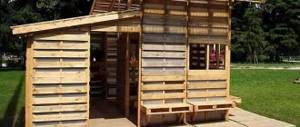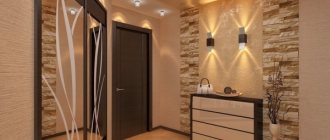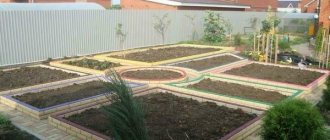Types of gazebos
According to the criterion of operating features and functional load, the following are distinguished:
- Stationary - structures designed for all weather conditions and all seasons, functional throughout the year.
- Portable or collapsible: used only in the warm season.
According to the criterion of design features:
- Closed: a gazebo, fulfilling both its direct functions and the role of a country house, summer house. There are: floor, roof, walls, windows and doors. Functional at any time of the year.
- Open: a gazebo used for its intended purpose only during the warm season. They consist of a frame, the floor is not a mandatory part. The walls are curtained or open. Climbing plants are planted around as decoration.
- Semi-open: a gazebo with glazed walls, visually reminiscent of a small house.
According to the criterion of location on the site:
On this topic:
You can build a gazebo alone in one day (video)
Dec 31, 2014
Do-it-yourself construction of a gazebo for a summer house
Oct 22, 2014
BACK FORWARD 1 of 2
- Separate: a gazebo made of wood with your own hands is located on the site separately from the residential building itself.
- Attached: the structure is adjacent to one of the walls of a country house.
Options for summerhouses made of logs
Gazebos made from logs differ from each other:
- by type of material used;
- according to form;
- according to design features.
The most common is the rectangular (square) design.
When selecting materials from which a structure is built, it is important to take into account that the structure is constantly exposed to the negative influence of the external environment:
- sunlight;
- moisture;
- temperature changes.
Therefore, before building a gazebo from a log with your own hands, you need to purchase means to protect the material from rotting and fire.
By material
When making summerhouses from timber, various materials are used. For the construction of supporting elements the following are most often used:
- oak;
- larch;
- cedar;
- fir;
- pine.
When constructing structures from logs, pine support elements are more often used. This material withstands moisture and therefore does not rot for several years. But compared to other types of wood, pine is much cheaper.
To build a gazebo from 100x100 timber with your own hands, glued laminated material is suitable. The latter consists of several boards pressed together. And due to the fact that an adhesive composition is used in the production process, a durable beam without cracks and crevices is obtained. Standard blanks are produced with the following cross-section:
- 100x100 mm;
- 150x150 mm.
Such timber is used for the construction of the base and frame. For strapping, rafters and logs, you can use material with a cross-section of 100x50 or 100x40 mm.
By shape
Wooden gazebos come in the following forms:
- square (rectangular);
- round;
- 6- and 8-gonal;
- oval.
For small areas, square structures are suitable. It is recommended to build structures of a similar shape if you plan to build a closed gazebo from rounded logs.
6- and 8-sided wooden buildings have a beautiful appearance. In addition, due to their design features, such structures take up relatively little space.
Hexagonal gazebo
By type of design
There are three types of gazebos:
- Open. They are structures without walls or windows. The opening of a wooden gazebo looks like a pavilion in which air circulates freely.
- Closed. It looks like a small wooden house with windows and doors. Often closed structures are used as a summer kitchen.
- Semi-closed. Such wooden structures have 1-3 walls. Semi-closed structures are installed if there is a need to block the wind from entering the structure.
Closed log gazebo
Regardless of the type of structure, if desired, you can build a gazebo made of logs with a barbecue or barbecue on your summer cottage. If an open structure is planned, a separate chimney will not be required to organize this zone.
How to choose a gazebo style?
Depending on the style of landscape design and the residential building on the site, you can choose the appropriate gazebo option:
- Classic style: symmetry, proportionality, 4- or 6-gonal shape, regular geometric lines. The roof is predominantly 2-, 4- or 6-slope with a tile covering. The domed shape looks harmonious.
- Oriental style: the central accent of the design is a domed or unusually shaped roof. The second characteristic feature is unusual ornamental compositions as decoration. Interior decoration should match the exterior design. Options for oriental buildings are a pagoda gazebo or a structure in the Japanese minimalist style.
- Victorian aesthetics: an English-style gazebo combines features of classic and country forms. Timber is the most popular material for Victorian buildings and is usually painted white.
Semi-closed or open light structures are typical; the perimeter is decorated with climbing plants. Features: symmetry, regular and clear forms, lattice walls, light colors. - Rustic style allows the use of rough, untreated wood - this is the very beauty and uniqueness of the gazebo. Such an unusual, “uncouth” design creates a feeling of comfort and homely warmth. The shape and design depend entirely on your desire. Stylizations like a chalet, a forester's house or a bird's nest will look harmonious on the territory of a personal plot.
- Country gazebos combine the features of rustic and classic. Made only from wood! It is recommended to use carved ornaments as decoration. Design options: stylization of a log house, a fairy-tale hut on chicken legs and others - you can fully show your creativity. The structure can be closed or open.
- Mediterranean design of a gazebo and a pergola are almost identical concepts. A light, open pergola, entwined with exquisite plants, is typical for areas with a subtropical, Mediterranean climate. To create the structure, wood is used in combination with stone and brick. The floors are laid with ceramic tiles or finished with solid boards.
Do-it-yourself summerhouses are represented by two of their distant relatives:
- Belvedere is a lightweight, open structure designed for installation on a hill. Provides excellent all-round visibility in a picturesque area.
- A pergola or “canopy” is a light, open gazebo used in the warm season. The structures are openwork, arched, and are used as a support for climbing plants. The most popular material for constructing a pergola is natural wood: oak, spruce, pine.
Features of drawing up a gazebo project
When drawing up a drawing of a wooden gazebo, you can use existing drawings, which are not so difficult to find now, or you can create your own individual style. If the design chosen is too complex and difficult to complete as a project, you can use the services of professionals who, in accordance with all the rules and requirements, will reproduce the correct drawing step by step.
The implementation of the project includes the creation of a sketch and drawings according to which the construction of the structure will be carried out. A sketch and layout diagram will help you understand at the first stage how the gazebo will be located on the ground relative to other buildings, as well as note the internal content of the building and understand how best to install communications and how much building material will be needed.
When drawing up a plan for a gazebo for a summer house, you should use some recommendations that will allow you to complete it as correctly as possible:
- Determination of the type of construction that will be made: open or closed.
- Determining the design of the gazebo, which should be combined with the general background and buildings on the site.
- Selecting a construction site for the structure. To do this, you need to have a site plan that shows all the buildings on it, garden paths, as well as the location of trees and shrubs. It is best to place the gazebo in the depths of the garden, at the end of the garden path at a distance of 3 - 5 meters from the residential building. If you plan to equip the gazebo with a barbecue, then it is better to remove it from the house by 8 meters.
- Indication of the dimensions of the gazebo, the location of the support posts and other elements of the gazebo. The shape and height of the structure’s fencing are also prescribed. For a company of 4 – 8 people, gazebos with a total area of about 12 – 16 square meters are suitable. meters. If in the gazebo you want to install not only a table with benches, but also a more comfortable relaxation area with sun loungers, then the area is calculated based on the fact that 4 square meters will be needed per person. m.
- Inclusion in the project of drawings of the gazebo, which are made from all sides. This is an image of the facade, a sectional view of the gazebo, and the location of technical components inside the structure.
- When installing a closed structure, a ventilation scheme is prescribed.
- Reproduction of a separate plan of the base for the gazebo, indicating its type and the material that will be needed.
- Description of installation locations for doors, stairs, windows and other important elements.
- Separate execution of the roof plan, which displays its type, dimensions, height, angles of inclination and material.
- Indication of the technology for installing the gazebo and each of its elements separately. If you plan to install a stove or barbecue, follow the masonry diagram and the design features of the foundation.
- Execution of wiring and power supply diagrams, if required.
- Development of a plan for the placement of light sources, furniture and necessary equipment.
According to the finished plan, the amount of necessary materials is calculated and an estimate for their purchase is drawn up. It must include fastening elements, impregnations and finishing compounds. Examples of plans are shown in the photo below.
The quality and strength of the future structure and the ease of its operation depend on how correctly and clearly the project is drawn up. It will also be possible to correctly calculate the amount of materials and components so that there is no shortage of them, and there is no need to purchase excess.
DIY gazebos: where to start?
If you have chosen a style and design option, you should choose a location for the structure. Depending on the size and shape of the site, the dimensions of the small architectural structure depend. Consider the purpose for which you are installing the structure:
- large family feasts in summer and winter or all year round;
- garden plot decoration;
- a convenient place for drinking tea in the summer;
- holidays in large groups on holidays or weekends.
In the first case, you should choose a secluded place, not very close to a residential building, so that unfriendly gatherings do not interfere with the rest of those who are in the house. Especially if several generations live in the house. As a decoration, the gazebo is installed so that it fits as harmoniously into the landscape design as possible and emphasizes its features.
A gazebo for feasts can be made in a closed form, equipped inside with a fireplace, a lighting system, and installed heating appliances. If you install it close to your home, you can quickly transport food and dishes prepared in the kitchen.
How to make a gazebo for a summer house or personal plot? It is worth paying attention to the recommendations.
Select the location for construction according to the following criteria:
- the area should not be subject to flooding;
- preferably a flat, open place;
- You should not install a gazebo next to outbuildings and a toilet.
Photos and drawings of wooden gazebos with your own hands will help you choose the best option:
Construction instructions
If we consider the construction process as a whole, the construction of a gazebo can be divided into several stages. Here is a detailed diagram of how to assemble the gazebo.
Tools and materials
Before starting construction work, you need to prepare drawings and calculate building materials.
Tools you may need:
- Saw.
- Plane.
- Hammer.
- Fasteners: screws or nails.
- Drill with a set of wood drill bits.
- Building level.
- Roulette.
Important! To more accurately calculate the required number of boards, it is recommended to first visit the construction market and familiarize yourself with the standard sizes of lumber. It is better to buy building materials with a small reserve.
Pouring the foundation
In order for the gazebo to stand for a long time, it is better to make a foundation that will help protect the wood from the harmful effects of melt water. Considering that we are talking about a lightweight and non-load-bearing structure, it is not necessary to fill the entire area with concrete for installing a gazebo. You can get by with a columnar foundation.
It is necessary to level the area of land where the gazebo will be installed; it is advisable to compact the soil. Holes with a depth of 40–50 cm are dug along the perimeter. If we are talking about building a square gazebo, the holes are dug in such a way that there are 3 columns on each side, located at the same distance, one must be in the center.
The pillars can be made from brick; in the center of the corner elements, reinforcement is placed for attaching the support posts. The columnar foundation is poured so that the top row of bricks is located above ground level.
Floor
To lay the subfloor, you need to make a bunch of corners. You will have to lay 50 × 150 mm boards around the perimeter. Holes are drilled in the edges through which the reinforcement bars will pass. The boards are nailed together using nails or long screws.
A subfloor is laid on top of the prepared base. In order to save money, it is better to use unedged lumber.
Frame
The frame of the homemade gazebo will be 4 vertically arranged boards, mounted with the end part on the reinforcement. To do this, you will have to drill holes of a given diameter. When the board is mounted on the pin, it is attached to the bottom trim using metal corners. Considering that the support posts bear the weight of the roof, it is better to use premium quality lumber, without falling knots and mechanical damage.
To give the frame the necessary rigidity, a mauerlat is placed along the upper edge: a frame made of boards, which serves as the base for the rafter system. At this stage, railings or sheathing are installed for mounting the walls. The elements give the frame additional strength and simplify subsequent stages of work, making them safer.
Roof
The roof of the gazebo can be single-pitched, double-pitched or multi-faceted. Depending on the chosen shape, rafters are erected: vertical and horizontal boards on which the roofing material will be laid.
To protect the interior of the gazebo from dampness, waterproofing is laid on top of the rafters, which is covered on top with a counter-lattice made of thin slats. The roof can be covered with metal tiles, shingles or corrugated sheets. If we are talking about the construction of a closed gazebo, which will be used in winter, a roofing pie is completely created, as in a residential building. In addition to waterproofing, this includes a layer of insulation and vapor barrier.
Arrangement and design
The interior decoration directly depends on the intended use of the structure. In the standard version, you need to install a table and benches, soft chairs and a rocking chair are suitable. Do not forget that the gazebo is intended for relaxation, so you need to create the most comfortable environment inside. Even in open-type structures, you can hang light curtains and place pots with indoor plants around the perimeter and corners.
Exterior decor can be done in the form of wood carvings. Even simple curls give the building an interesting and original appearance. Wood carving is considered labor-intensive and painstaking work that requires certain knowledge. However, the result obtained justifies all the efforts.
Foundation and walls for the gazebo
Depending on the type of soil, the purpose of constructing the building, and its parameters, we choose the type of foundation: slab, columnar, strip.
A massive structure needs a strong and reliable foundation. Wall options:
- wooden beam;
- boards;
- whole logs;
- slats.
If you are a professional, it will not be difficult to build a structure of complex shape, round or 6-gonal. For a beginner, we recommend starting with a simple, square or rectangular gazebo with lattice walls - it looks elegant and stylish.
Gazebo shape
Garden structures can take the following forms:
- Round;
- Square;
- Rectangular;
- Polygonal.
The rectangular design is universal and easiest to reproduce. In addition, it can be made from any material - brick, wood or metal. The roof for a rectangular gazebo can have any configuration.
Drawing of a rectangular gazebo
A rectangle is the simplest form of a gazebo.
The six or octagonal structure can easily accommodate 7 to 10 people. Polygonal gazebos are built from wood or metal. A wooden structure will be much cheaper and easier to make.
Drawing of a hexagonal gazebo
The hexagon gazebo fits well into any landscape design. In addition, it takes up minimal space.
Step-by-step construction of an octagonal gazebo with drawings The octagonal gazebo 4x4 m has undoubted advantages - it is spacious and stable. It can comfortably accommodate up to 10 people.
When choosing a place to build, you first need to decide where the entrance will be. It is better not to install the structure in the sun so that it does not become stuffy and hot in the summer.
To begin with, mark the terrain. A pole is driven in the middle and, using a peg and a non-elastic rope, a circle is drawn on the ground. It is divided into eight equal segments. In this case, one of them must be at the entrance to the future building.
The easiest way to build a wooden gazebo is to use a minimal set of tools and available materials. But before doing this, be sure to treat the wood with a protective agent against moisture and insects.
DIY gazebo: drawings and dimensions
Let's look at the features of building a small, open wooden gazebo. Characteristics of the future design:
- size: 3x3 meters;
- height of the structure to the top – 3.5 meters;
- 4-pitched roof;
- columnar foundation.
The initial stage for the construction of a gazebo
Preparing the site for construction. It needs to be cleared, excess vegetation removed, and the surface leveled. The size of the plot should be one and a half meters larger on each side than the building itself. A do-it-yourself gazebo made of natural wood should be protected from flooding.
We buy materials for the gazebo
For a square building of 3x3 meters, you need to purchase timber in several cross-section options:
- 10x10 cm: 3-meter beams in the amount of 5 pieces for the base; 4 pieces 2.3 meters long for supports, 5 pieces meter long for the construction of the entrance, 3 pieces for strengthening and rigidity of the structure, for the center of other sides of the structure.
- 10x4 cm: for the roof - 8 pieces of 2 meters each, 7 beams of 3 meters each for piping and railings, beams of 2 pieces in sizes 1 and 4.3 meters (roof cross and railings).
To create a gazebo other than timber:
- solid floorboard: 4 cm thick, 9 sq. m;
- lining in the amount of 20 sq. m;
- wooden slats;
- inch for roof sheathing;
- roofing;
- bricks and cement;
- 5 kg of nails and screws;
- special processing agents for wood (about 15-20 liters).
Installation of a columnar foundation
How to build a gazebo with your own hands? It is very important to build the foundation correctly.
The optimal type of foundation for a small, open building is columnar. In this case, brick was chosen for it.
What is needed to install a columnar foundation:
- item for digging holes for posts: a drill or an ordinary shovel;
- level for leveling;
- roulette;
- material for posts;
- cement;
- steel reinforcement to strengthen the structure;
- roofing felt for waterproofing the bottom of a wooden gazebo.
Want to save money? If you have already used bricks, you can use them for the foundation.
A drawing is presented according to which the area for installing the gazebo should be marked.
It is necessary to dig holes at the points where the foundation pillars will be installed. The last row of bricks should be at ground level. Before laying the brick, you need to create a cushion that is placed at the bottom of the hole. The pillow is made of crushed stone or sand.
Using a hydraulic level, it is necessary to level the plane of the brick pillars. To ensure the rigidity of the structure, reinforcement bars must be inserted into the corner posts.
On this topic:
Construction of a wooden gazebo
Construction of a gazebo in a “primitive” style
How to create a cozy relaxation area in your country house
Five options for a gazebo in your garden
BACK FORWARD 1 of 2
Considering the size of the building, the result should be 9 columns: 4 corner, 4 intermediate between the corners, 1 central.
The supports should be located under the side walls every 2 meters. Considering that brick was chosen as the material for the supports, the holes need to be dug with a shovel, they should have a square shape. Recommended depth – 50 cm (not less). A hand drill is used if the posts are made, for example, from metal pipes.
It is recommended to provide waterproofing and protection of the bottom of the gazebo from moisture. For this, a double layer of roofing material is used. Do-it-yourself installation of a summerhouse gazebo is presented in the drawings and photos.
For the base, beams with a cross section of 10x10 cm were purchased in the amount of 5 pieces. The reinforcement that remains on the surface of the posts is placed in a hole drilled in the corner beams.
In order to connect the beams at their intersections, you can use the “half-tree” fastening technique. If everything is done according to technology, the result will be a reliable, durable structure.
Installation of the floor in the gazebo
The design can be made with or without a floor. Floor installation requires a foundation.
If there is no floor, you need to prepare a platform for the gazebo, finished with paving slabs and paving stones. The option without creating a special area is also allowed for summer open buildings.
Now consider the option with a foundation and floors. Installation is carried out after the foundation is completely completed and strengthened. What you need for the floor:
- beam;
- edged board;
- tools: hammer, drill, level, jigsaw;
- nails.
The easiest way to create floors is in a square or rectangular gazebo. The first step is to install timber around the perimeter of the base. Fastening is carried out using reinforcement that protrudes from the foundation.
The next step is to install logs every 30-40 cm. The floor should not be inclined, so you need to use a level.
And the last thing is covering the floor with boards.
To treat wood, it is necessary to use special substances to protect it from rotting and the negative influence of insects.
Frame installation
For the frame, logs 2.3 meters long with a section of 10x10 cm are intended:
- The surface of the beams should be smooth; an electric plane can be used to process the surface.
- It is necessary to make cuts to attach the roof rafters. The thickness of the cut depends on the thickness of the planks.
- In the corners of the gazebo there is reinforcement that must be mounted on support posts. To do this, you need to make a small hole at the end of the post - about 1 cm in diameter.
- The posts must be absolutely straight and vertical - you need to use a level to check the post's position.
- The position of the pillar is secured using first rough and then finishing struts made of timber.
In addition to wood, PVC or steel pipes are used for the frame. Polymer materials do not require special protection against rotting.
Installation of a roof for a gazebo and lining with clapboard
Construction process:
- For the roof, a cross is formed from wooden beams. To connect, you can use the “half-tree” technique.
- Cuts are made at the edges of the boards to connect with similar cuts on the supports.
- It is recommended to use a special block to enhance the strength and durability of the connection.
- The structure is installed on supports.
After the frame is assembled, it is necessary to install the pillars and railings.
It is planned to create a 4-slope roof and cover it with bitumen shingles.
To create the roof, we use 10x10 cm timber - an 8-sided section about 80 cm long is made from it. Makes a cut in the timber for the first 2 planks. This is a post that will be fixed in the central part of the cross; it will ensure the strength of the future roof.
2 rafters are connected using the half-tree method and fixed in the grooves. We then attach the second pair of rafters to the central post. The entire structure is assembled on the ground.
When 2 pairs of rafters are secured, we attach 4 more planks so that their lower ends lie on a bunch of outer posts.
If winter in your area is characterized by heavy snowfall, you should consider additional roof reinforcement. You need to add support posts between the corner supports, above the center foundation posts.
Now you can move on to covering the gazebo with clapboard and roofing work.
To cover the gazebo, we chose clapboard and special fasteners for its simple and aesthetic fastening. The roof is made of wood - planks up to 3 cm thick. We gradually cover all the roof slopes with these planks.
It is imperative to take care of creating a drain - the lower strips must protrude beyond the rafters by at least 10 cm.
In the future, the roofing covering will be laid on top of the sheathing. The choice of roofing depends on stylistic nuances and financial capabilities.
The open parts of the gazebo, which are not covered with clapboard, can be decorated with thin wooden planks fixed crosswise.
Since the work is carried out with wood, care must be taken to protect the structure from the negative influence of external factors. Wood is treated with special substances to protect it from rotting.
Construction of a foundation for a wooden gazebo
Lightweight gazebos with a wooden roof can be built without a special foundation. This is especially true for those structures where the roof and rafter system do not have much weight. This option is also suitable where there are no plans to make a floor - you are going to leave it earthen or fill it with sand.
First, you need to level the construction site by removing the surface nutrient layer. Next, you can fill the area with gravel, preferably so that it has an elevation towards the center. This will prevent water from seeping under the floor.
Holes are dug under the wooden support pillars. The number of pillars is determined by the size and shape of the gazebo. For a square gazebo measuring no more than 3x3 m and with a sandy floor, four supports are sufficient. For large structures or for those where a complex rafter structure or roofing made of natural tiles or other heavy material is planned, intermediate supports will be needed. Also, intermediate supports are needed for laying lags.
Drawing of a columnar foundation made of brick under a wooden gazebo: 1 – brick column, 2 – soil surface level, 3 – layer of roofing felt, 4 – joists, 5 – support column
The diameter of the logs must be at least 200 mm. Particular attention should be paid to antiseptic treatment of the underground part of the support. It can be covered with varnish or, in extreme cases, burned over a fire. Holes about one meter deep are dug under the support beams. Gravel, fragments of brick, etc. mixed with sand are poured to the bottom.
The layer of such a compacted cushion should be about 20 cm. After the support is installed in the hole, the gap between it and the soil is filled with sand and gravel mixture and compacted. Such a foundation can last 15 years.
For a longer service life, you need to make a columnar foundation with a shallow depth.
Stages of constructing a columnar foundation for a gazebo:
- In the places of support, holes are dug half a meter deep.
- A gravel-sand mixture is poured onto the bottom.
- Formwork measuring 400 x 400 mm and a height of 150-200 mm is installed around the perimeter.
- For pouring, concrete is used in the following proportions: cement + sand + gravel – 1:2:2.
- Before pouring concrete, you need to install reinforcement. The concrete hardening time is 2 days.
- This foundation can be completed on top with brick columns, so that there is an elevation of two bricks above the soil level, or the columnar foundation can be completely made of brick.
In a quadrangular gazebo, supports are made in the corners, in the middle of each side and one in the center of the gazebo.
As a base, you can also make a slab foundation with a shallow depth. First, the entire perimeter of the site is deepened by 10-15 cm and formwork is installed around the perimeter. Next, the surface is backfilled and gravel and sand are leveled. The mixture can be compacted with water from a hose.
Reinforcement is laid on top and a concrete platform is poured. It can already serve directly as a floor or as a base for ceramic tiles, but you can lay wooden floorboards on it on the joists.
Making the lower and upper trim
A frame made of timber with a profile side of 150 or 200 mm is laid on the foundation. The harness can be fastened with a mustache when the corners at the junction are cut at an angle of 45 degrees; this is important if the gazebo is rectangular in shape.
You can use the half-tree method, when part of the wood is removed and the beams are inserted into each other or joined end-to-end.
Connecting timber using the half-tree method is a fairly simple but reliable method of joining. It allows you to connect two identical parts at right angles
The frame beam is attached to the foundation columns using metal corners. You can immediately make the top frame so that after installing the pillars, you can lift it and install it on the supports. It simply copies the bottom trim.
Fastening the support pillars and the top trim
The corner support posts are attached to the harness. They can be secured in different ways. Let's consider one of them. First, the support is attached to the harness with metal corners. Then it is leveled and temporarily secured with an oblique strip on both sides.
The photograph shows the places where the support posts are attached to the timber frame, as well as the temporary fixation with slanting slats. You can see how the logs are attached to the harness
The top trim is also attached to metal corners. For greater reliability, you can drill holes through the trim into the support post and screw in a 250 mm screw.
At this stage, you need to install entrance posts or additional posts for railings if the gazebo is more than three meters long.
Flooring and railing construction
The basis of the floors are logs and a subfloor made of boards. The logs are laid on a concrete base or timber frame. As insulation, it is necessary to use roofing felt bedding. The subfloor is installed with small gaps.
For the floor, use a board of 20 mm or more. You need to leave a small gap between the boards. This is done so that water from rain and melted snow does not stagnate on the floor and goes into the cracks.
The railings can be fixed to metal corners. This can also be done in another way: first, attach slats to the support pillars with self-tapping screws. Place railings on them and secure them. Install one beam diagonally, it will add additional rigidity.
When completely sewing up the lower part of the gazebo with boards, they will be attached to this beam. It can also be an additional decorative element in the half-timbered style, if you add two more short bars to give it an X-shape.
Alternative: log walls
Projects for building a gazebo at the dacha involve the use of logs to create side walls.
If you choose logs for the walls of the gazebo, keep in mind that you do not need a frame. The actual laying of logs in rows begins immediately. The first row is attached to a base protected by waterproofing. Fastening the corners is done by creating grooves at the ends. Docking is done at the corners. The number of rows depends on the project - for an open type structure, 3-4 rows are enough.
What material to choose for the roof?
The material that will cover the roof of the gazebo must meet a number of requirements:
- resistance to moisture and temperature changes;
- high level of strength with low weight;
- durability;
- providing protection from precipitation (especially if the gazebo is closed and will be used in the autumn-winter period);
- stylistic match, if the house is covered with soft bitumen shingles, it is naturally better to use it for the gazebo.
The calculation of the roof truss system depends on the choice of roofing material, so you need to think through all the points in advance. The weight of the future structure, which also takes into account the roof, influences the choice of foundation type.
When choosing, consider the type of gazebo, its style and purpose.
What roofing options can be used for a wooden gazebo:
- Ethnic or natural options - reeds, shingles, straw. It's stylish, inexpensive, but short-lived. It is absolutely not compatible with a barbecue, since the material is flammable, but it looks impressive.
- If the roof is planned to be flat, roll materials are used. For example, roofing felt. Laying it is simple and quick, but aesthetically it loses.
- Slate is an inexpensive material that is suitable for a wooden gazebo, but reinforced. The material has significant weight, so it cannot be called practical. Aesthetically, it’s not the most advantageous, but it’s inexpensive. If you plan to install an economical version of a summerhouse gazebo, this type of roof is suitable.
- Corrugated sheeting and metal tiles are practical and beautiful roofing materials for a wooden gazebo. The advantages include: light weight, no special requirements for the rafter system, installation is simple and not for a professional, aesthetics, variability of color solutions. Disadvantages: noisy material during precipitation, gets very hot in the sun.
- Euroslate or ondulin is a lightweight, profiled fabric-based material with bitumen impregnation and basalt topping. The coating is beautiful, moisture-resistant, and inexpensive. Cons: can become overgrown with moss, fades, not the most durable material.
- Polycarbonate is an inexpensive, lightweight, flexible material that demonstrates moisture resistance and noiselessness. This is an option for an open gazebo for summer tea parties, rather than a closed structure or a gazebo with a barbecue. It's melting!
- Bitumen shingles are the most preferred, functional and practical option. But not the most economical! Looks harmonious and stylish when paired with wood. Please note: if you are not a professional, it is recommended that you carefully study the installation features of such a roof. The remaining comments regarding the soft roof are only positive: it is durable, lightweight, resistant to moisture and UV radiation, rotting, frost, versatile and silent. The material is suitable for barbecues and is not flammable.
Foundation options for gazebos
Above is an example of the technology for installing a columnar foundation. This type combines practicality and ease of installation.
There may be two more types of bases for a wooden gazebo in your arsenal:
- Slab: suitable for small structures with regular square or round shapes. Installation begins with marking the territory. A small pit is created (up to 50 cm deep), the bottom is leveled and a cushion of sand about 15 cm thick is formed. Another 15 cm of crushed stone is poured on top of the sand. A reinforcing mesh is laid on the crushed stone. Waterproofing is being carried out. The reinforcement sections should protrude approximately 15 cm above the foundation. The perimeter is delineated by formwork reinforced with spacers. Concrete is poured inside.
- A shallow, strip-type foundation is the best option for a closed gazebo. When the territory is marked, the boundaries are marked with pegs. Calculate so that the tape is thicker than the walls - up to 30 cm. Depth - up to 70 cm. The depth may depend on the type and characteristics of the soil. A sand cushion is made at the bottom, gravel is poured on top, reinforcement and low formwork are performed.
High-quality execution of the gazebo is the key to its durability and aesthetics.
The simplest wooden gazebo
Having decided on the optimal place to place the garden gazebo, you can proceed to the main construction activities.
The simplest option is a gazebo in the form of an “umbrella”. You just need to properly secure the vertical support post and arrange the roof. The post is installed in a pre-prepared hole in the ground and filled with concrete.
The simplest option is a gazebo in the form of an “umbrella”
Before you begin installing the pole, its lower part must be treated with antiseptic impregnation, otherwise the wood will very soon begin to rot.
Gazebo in the form of a folding umbrella
Additionally, the lower part of the post can be wrapped with roofing felt. Wrap the area that will be buried in the ground, and about 20-25 cm above it.
You can also apply preheated bitumen mastic to the pole for protection. A more reliable option involves first placing a wooden pole in a piece of high-quality metal pipe of a suitable cross-section and then concreting the entire structure at once. To fix the wooden support to the pipe, use regular self-tapping screws.
Select the dimensions of the pillar in accordance with the height of the future gazebo, the roof structure and the climate characteristics of the site.
After the support is ready for installation, dig a hole for it about 80-100 cm deep. Select the dimensions of the hole individually in accordance with the dimensions of the pole. In general, the hole should be larger than the pillar by about 5-10 cm on each side.
Place the post strictly vertically in the hole, fill the free space around it with a sand-gravel mixture to about a third of the height of the hole, and then fill the remaining space with concrete mortar.
Concrete “leg” of the gazebo
Let the concrete dry and proceed to arranging the guy wires, which will set the width of the umbrella. Make guy wires from timber. To attach the guy wires to the support, use self-tapping screws or nails. The optimal mounting height is at a distance of about 220-230 cm from the floor.
The recommended length of braces made of wooden beams is 150-160 cm. This indicator will be quite enough to ensure normal stability of the structure.
After fixing the required number of guy wires, proceed to arranging the roof structure. The roof will be extremely simple. It is important that it is not heavy - metal-based coatings are definitely not suitable. And there is no need for this - such “umbrellas” are usually used exclusively on warm days.
The best option for a roof structure is an awning made of tarpaulin or canvas. Barrier material or even transparent polypropylene is also suitable. To equip the roof, one 4-5 mm sheet of such material is enough.
How to make a gazebo umbrella
Secure the awning in a way that suits you. Consider the fact that with the arrival of cold weather, such an awning must be removed and taken indoors.
If you wish, you can make a roof from fagots, using reeds or straw to make them. Such a gazebo will look like a tropical bungalow and will add a certain flavor to the design of the site.
Gazebo umbrella
To prevent such an umbrella from leaking in the rain, place a thick film or tarpaulin under the roof.
Gazebo-umbrella
Often, roofs of this type begin to sag due to heavy rains or simply from time to time. Eliminate the risk of such defects in advance. To do this, stretch a thin wire from the center of the umbrella to the spacers from the beams; fishing line will also work. Place the wire in increments of about 250 mm. The frame made of wire (fishing line) is not noticeable and reliably protects the roof from sagging.
Gazebo-umbrella











